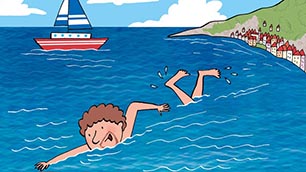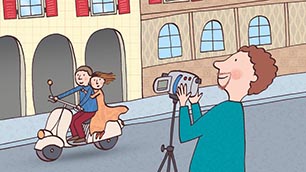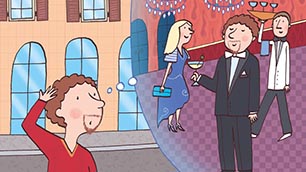I. The Future
As we have seen, it is quite common in Italian to use the present tense to express future actions, especially when the action is imminent and/or when it is accompanied by an expression of future time. For example, I can say, Domani lavoro fino alle 18.00 (Tomorrow I will be working until 6pm). I’ve used the present tense to convey a future action.Of course there is also a formal future tense in Italian. To form the simple future (futuro semplice), you drop the final -e of the infinitive and add the endings -ò, -ai, -à, -emo, -ete, -anno. Only verbs ending in -are have further changes: they replace the -a- in the infinitive with an -e-.
Take a look at the following table which shows the conjugations for regular verbs ending in -are, -ere, and -ire.





















